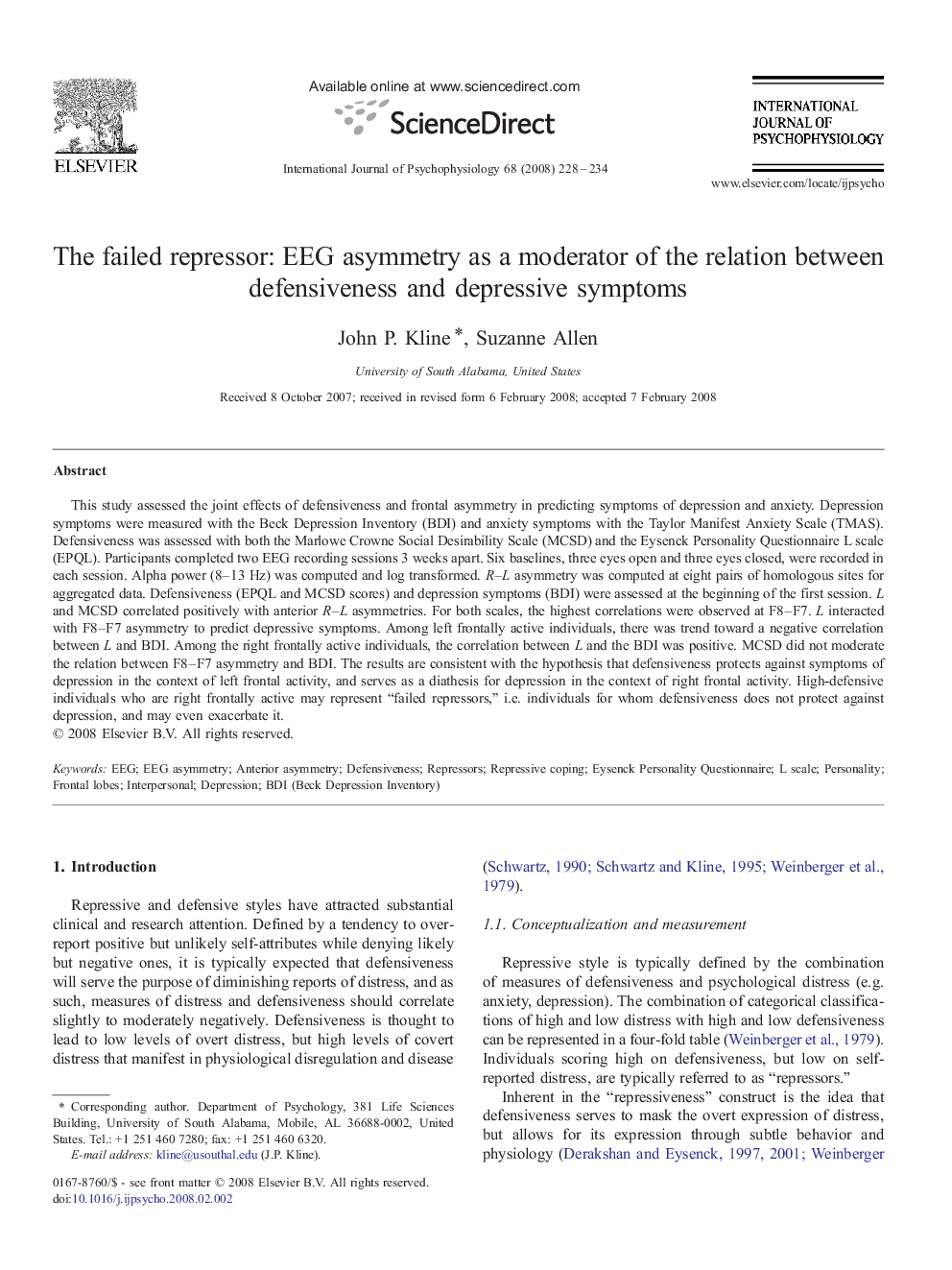| Article ID | Journal | Published Year | Pages | File Type |
|---|---|---|---|---|
| 930661 | International Journal of Psychophysiology | 2008 | 7 Pages |
This study assessed the joint effects of defensiveness and frontal asymmetry in predicting symptoms of depression and anxiety. Depression symptoms were measured with the Beck Depression Inventory (BDI) and anxiety symptoms with the Taylor Manifest Anxiety Scale (TMAS). Defensiveness was assessed with both the Marlowe Crowne Social Desirability Scale (MCSD) and the Eysenck Personality Questionnaire L scale (EPQL). Participants completed two EEG recording sessions 3 weeks apart. Six baselines, three eyes open and three eyes closed, were recorded in each session. Alpha power (8–13 Hz) was computed and log transformed. R–L asymmetry was computed at eight pairs of homologous sites for aggregated data. Defensiveness (EPQL and MCSD scores) and depression symptoms (BDI) were assessed at the beginning of the first session. L and MCSD correlated positively with anterior R–L asymmetries. For both scales, the highest correlations were observed at F8–F7. L interacted with F8–F7 asymmetry to predict depressive symptoms. Among left frontally active individuals, there was trend toward a negative correlation between L and BDI. Among the right frontally active individuals, the correlation between L and the BDI was positive. MCSD did not moderate the relation between F8–F7 asymmetry and BDI. The results are consistent with the hypothesis that defensiveness protects against symptoms of depression in the context of left frontal activity, and serves as a diathesis for depression in the context of right frontal activity. High-defensive individuals who are right frontally active may represent “failed repressors,” i.e. individuals for whom defensiveness does not protect against depression, and may even exacerbate it.
